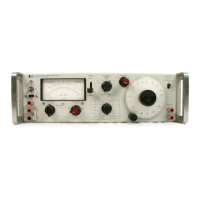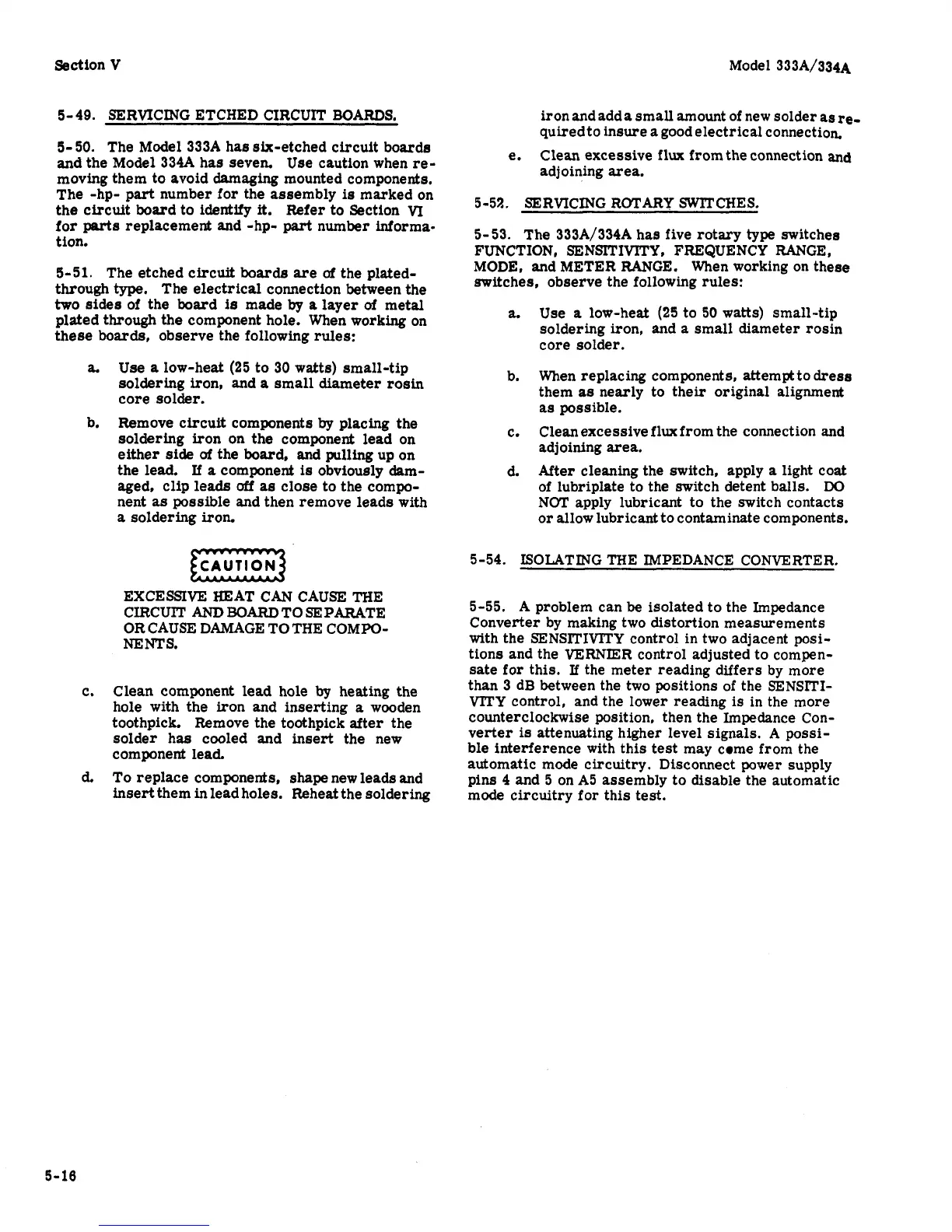Section
V
Model 333A/334~
5-49. SERVICING ETCHED CIRCUIT
BOARDS.
5-
50.
The Model 333A has six-etched circuit boards
and
the Model 334A has seven. Use caution when
re-
moving them to avoid damaging mounted components.
The -hp- part number
for
the assembly
is
marked on
the circuit board to identify
it.
Refer to Section
VI
for
parts
replacement and -hp-
part
number informa-
tion.
5-51. The etched circuit boards
are
of
the plated-
through
type.
The electrical connection between the
two
sides
of the board
is
made
by
a
layer
of
metal
plated through
the
component hole. When working on
these
boards,
observe the following
rules:
a.
Use
a
low-heat
(25
to
30
watts) small-tip
soldering iron, and
a
small diameter rosin
core
solder.
Remove circuit components
by
placing the
soldering iron on the component lead on
either
side
of
the board,
and
pulling up on
the
lead.
If
a
component
is
obviously dam-
aged, clip
leads
off
as
close to the compo-
nent
as
possible and then remove
leads
with
a
soldering iron.
b.
EXCESSIVE HEAT CAN CAUSE THE
CIRCUIT ANDBOARDTOSEPARATE
OR CAUSE DAMAGE TO THE COMPO-
NENTS.
c. Clean component
lead
hole
by
heating the
hole with the iron and inserting
a
wooden
toothpick. Remove the toothpick
after
the
solder has cooled and
insert
the new
component
lead.
To replace components,
shape
new
leads
and
insert
them
in
lead holes. Reheat the soldering
d.
iron and adda small amount of new solder
as
re-
quiredto insure a goodelectrical connection.
Clean excessive flux from the connection and
adjoining
area.
e.
5-52. SERVICING ROTARY SWITCHES.
5-53. The 333A/334A has five rotary
type
switches
FUNCTION, SENSITIVITY, FREQUENCY RANGE,
MODE,
and METER RANGE. When working on these
switches, observe the following rules:
a.
Use
a
low-heat
(25
to
50
watts) small-tip
soldering iron,
and
a small diameter rosin
core solder.
b.
When replacing components, attempt to
dress
them
as
nearly to their original alignment
as possible.
Cleanexcessive fluxfrom the connection and
adjoining
area.
After
cleaning
the
switch, apply a light coat
of
lubriplate to the switch detent
balls.
DO
NOT apply lubricant to the switch contacts
or
allow lubricant to contaminate components.
c.
d
5-54. ISOLATING THE IMPEDANCE CONVERTER.
5-55. A problem can
be
isolated to the Impedance
Converter by making two distortion measurements
with the SENSITIWTY control in two adjacent posi-
tions and the VERNIER control adjusted to compen-
sate
for this.
If
the meter reading
differs
by more
than 3 dB between the two positions of the SENSITI-
VITY control, and
the
lower reading
is
in the more
counterclockwise position, then the Impedance Con-
verter
is
attenuating higher level signals.
A
possi-
ble
interference with this
test
may come from the
automatic mode circuitry. Disconnect power supply
pins
4
and 5 on A5 assembly to
disable
the automatic
mode circuitry for this test.
5-18

